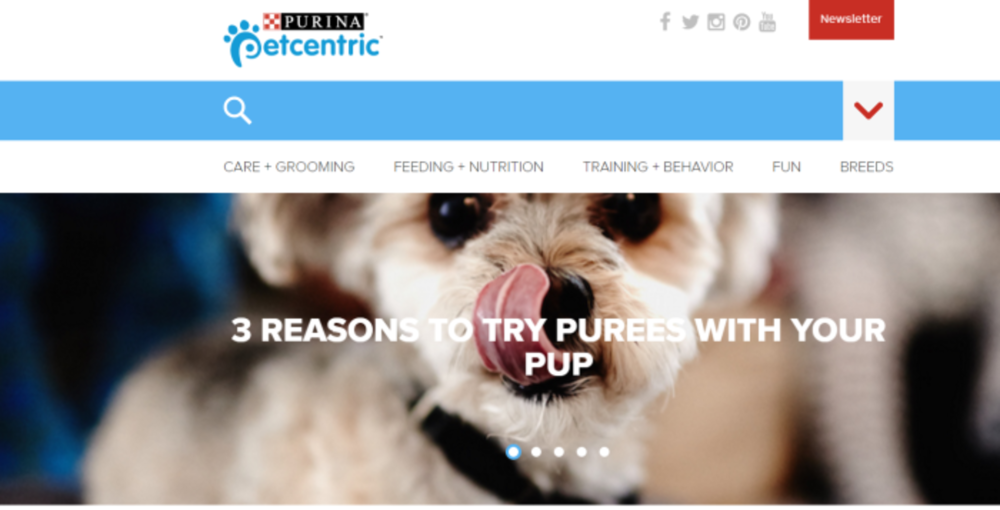Pet lovers today take a more inclusive approach with household pets, treating their animals as part of the family. The love these that people have for their pets is deep-seated—and personal. So, marketers for pet care company Nestlé Purina decided use that emotional connection to create personalized experiences to engage its website visitors.
“We publish content for pet owners; my goal is to create a vibrant community around the love of pets, including their care,” says Laurie Clithero, brand manager for Petcentric, Nestlé Purina’s online hub for animal lovers. Clithero says that extending the personal relationship between pet lovers and household animals is critical to creating content that’s relevant and impactful to consumers. “Our priorities are to create relationships with people as unique individuals, to understand each individual’s needs, and to connect with people by delivering the right message at the right time,” she says.
She says that the marketing team for Nestlé Purina’s Petcentric aimed to build a more customized content hub and deliver unique user experiences that tapped into customers’ personal needs and nurtured their unique relationships with their family pets.
“Personalization is clearly important to relationship building,” she explains. “And providing relevancy to the user’s experience requires understanding customers’ behavior and receptiveness.”
Although Clithero and her team had clear goals about making experiences for site visitors unique and personalized, she says that they simply didn’t know how. So the marketing team worked transform a cookie-cutter, bland site experience into a more engaging one.
“The website experience before was generic and content wasn’t targeted for specific individuals,” says Matthieu Dejardins, CEO at marketing and analytics platform NextUser, which also provided advice on strategy to the pet care company. “The main goal was to personalize the website experience for identified and anonymous users.”
The way to achieve that, Dejardins says, was to tap into behavioral and location data.
“We process users’ activity, history, device, demographic, and geographic data,” he explains. “So, behavioral data is highly relevant in placing the right messages for not only what to display, but also when to display it. There’s always a moment during which the user will be more inclined to receiving a certain type of message, and behavioral data is the information we need to pinpoint these variables.”
So with tools from NextUser, Clithero and her team began using behavioral data to make content recommendations. “For new visitors, we’re using geolocation to personalize the experience, matching the weather with an activity to do with your pet. When users are browsing content, we provide recommendations for similar articles,” Clithero says. “Later, when they return to any page of the website, we display a welcome-back message with individualized content suggestions. Last, we do progressive profiling to help understand what type of pet [visitors] have, the pet’s age, and even habits so we can further improve the future experience.”
She says the results show that website personalization—enabled by behavioral data—is making a positive and measurable difference. Petcentric’s bounce rate has decreased by 37%, and the number of sessions that last less than 10 seconds decreased by 20%.
Clithero says the retooled strategy and encouraging results have taught the team how best to move forward. “The lesson is simple,” she says. “Using the right message, at the right time, will help users by bringing relevance and purpose to [a customer’s] visit.”









